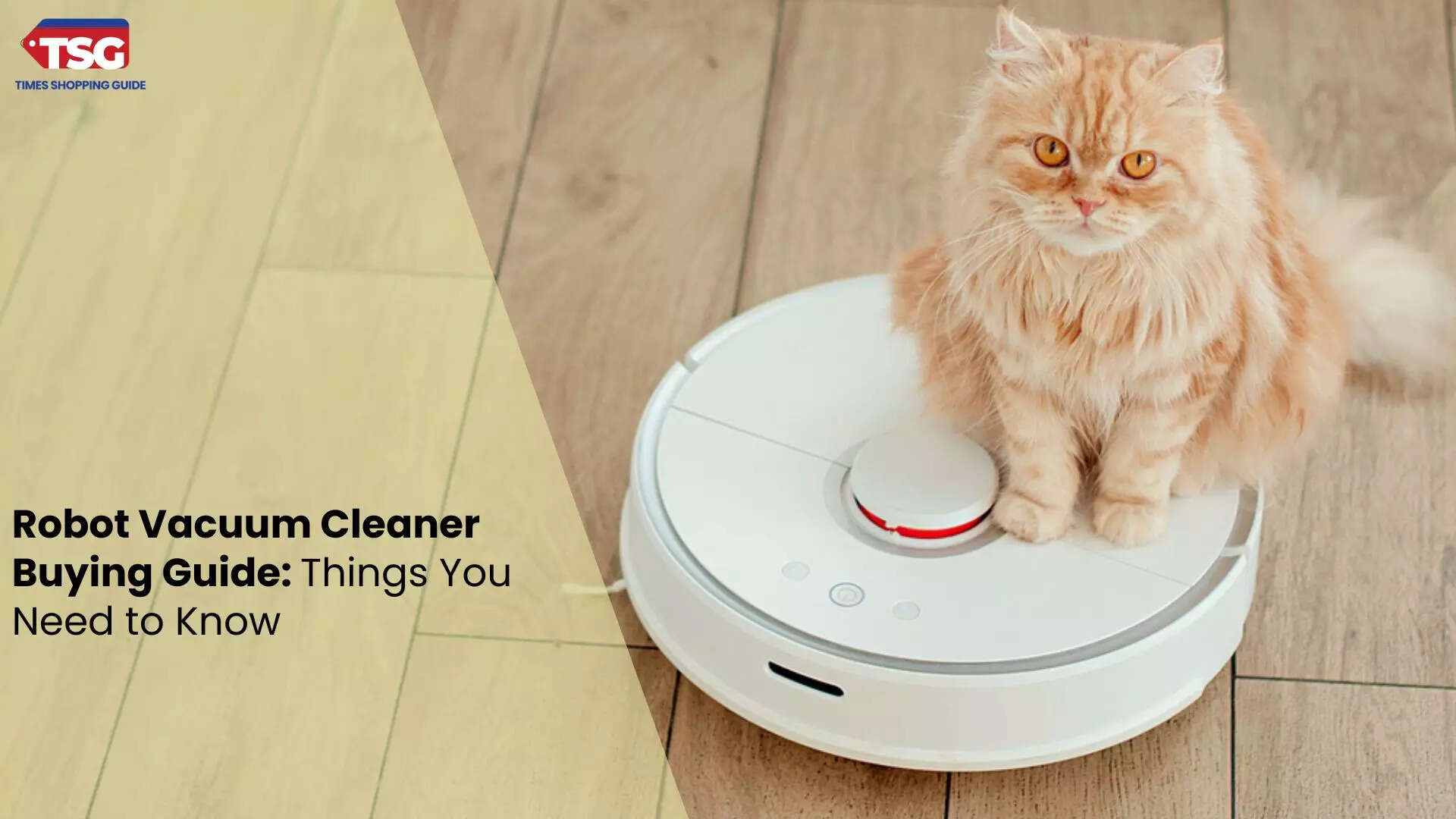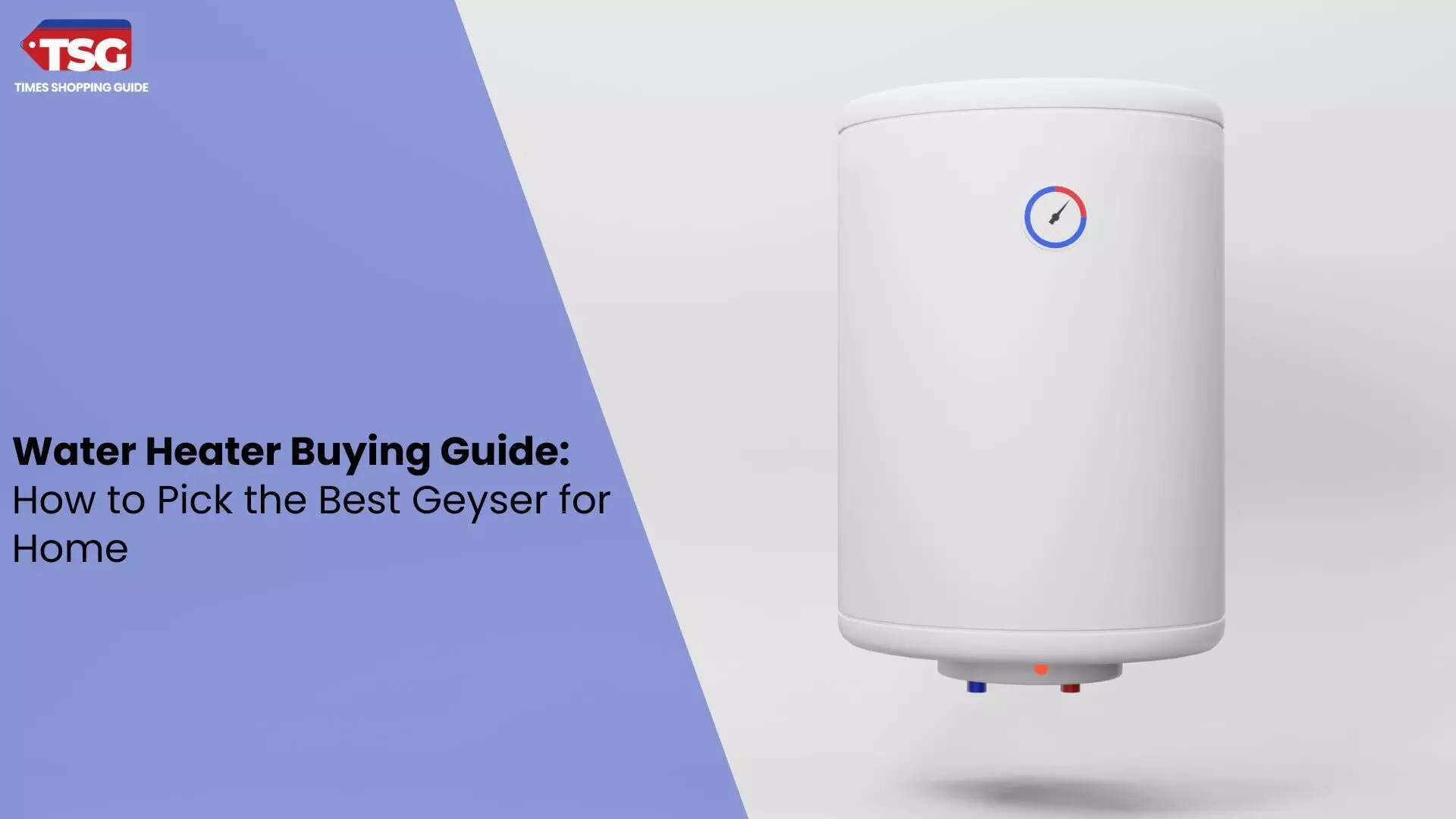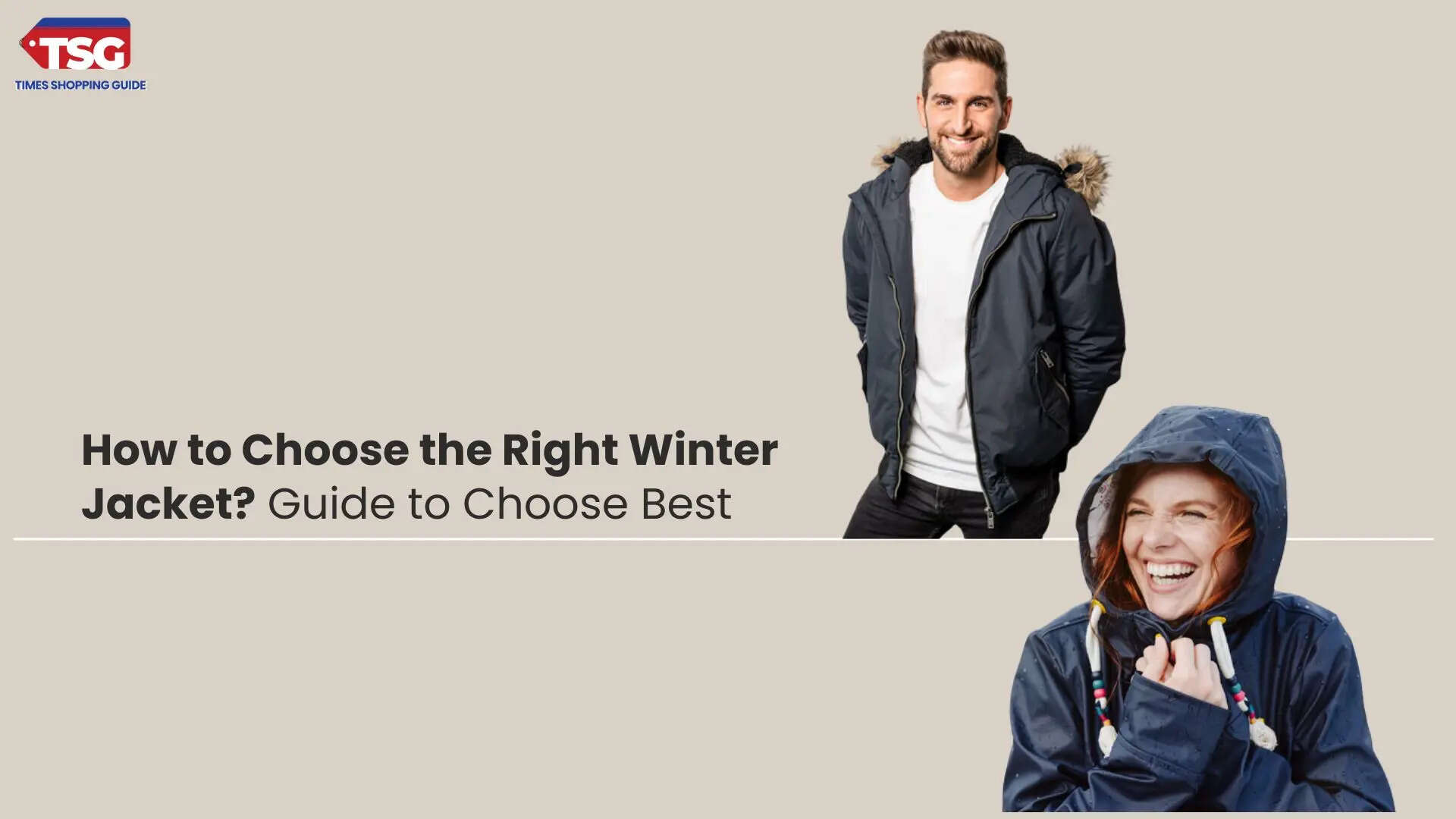- home
- appliances
- buying guide
- robot vacuum cleaner buying guide things you need to know
Robot Vacuum Cleaner Buying Guide: Things You Need to Know
With the rise of smart home technology, robot vacuum cleaners have become popular for maintaining clean floors with minimal effort. This robot vacuum buying guide outlines the key factors to consider when purchasing the best one, including types, features, performance, price, and maintenance, to help you get one that suits you best.

Whether you're a first-time buyer or looking to upgrade, this vacuum cleaner buying guide will help you navigate the essential features, types, and considerations that will make your purchase worthwhile.
Robot Vacuum Cleaner Buying Guide: Understanding Types of Robot Vacuums
Before diving into features, it's crucial to understand the different types of robot vacuums available on the market:- Basic Robot Vacuums: These models typically focus on suction and navigation, making them suitable for light cleaning. They may not have advanced features like mapping or scheduling, which is why these vacuum cleaners are available for under 10000.
- Smart Robot Vacuums: These vacuums, equipped with Wi-Fi connectivity, can be controlled via smartphone apps. They often include features like scheduling, real-time monitoring, and integration with smart home systems.
- Robot Mops: Some robot vacuum cleaners combine vacuuming with mopping capabilities, allowing for deeper cleaning. They can handle various surfaces, including hard floors and low-pile carpets.
- Self-Emptying Robot Vacuums: These high-end models come with a base station that automatically empties the vacuum's dustbin, reducing the need for manual maintenance.
Also Read: Best Wet Cleaner for Floor: Cleaning with a touch of elegance.
Robot Vacuum Cleaner Buying Guide: Key Features to Consider
When choosing the best robot vacuum cleaner, consider the following features:a. Suction Power: Suction power is crucial for effective cleaning. Look for models with adjustable suction settings, especially if you have different floor types (carpets, hardwood, etc.). Check reviews for real-world performance insights.
b. Navigation Technology: Navigation technology in robot vacuum cleaners varies from basic random navigation to advanced mapping systems. Basic models move in unpredictable patterns, while sophisticated ones use sensors and cameras to create home maps. This enables systematic cleaning and allows users to set designated zones and no-go areas more efficiently.
c. Battery Life: Battery life varies widely among models. A longer battery life means less frequent charging and more extended cleaning sessions. Look for vacuums that can run for at least 90 minutes, especially if you have a larger area to clean.
d. Dustbin Capacity: A larger dustbin can hold more debris, reducing the frequency of emptying. However, larger dustbins may add to the vacuum's overall size.
e. Smart Features
- App Control: Many automatic vacuum cleaners now offer smartphone apps for scheduling and monitoring.
- Voice Control: Integration with virtual assistants like Amazon Alexa or Google Assistant allows for hands-free operation.
- Mapping: Advanced models can create a map of your home, enabling you to designate cleaning zones and set no-go areas.
Robot Vacuum Cleaner Buying Guide: Performance and Cleaning Ability
a. Surface Compatibility: Check whether the robot vacuum suits your floor types. Some vacuums perform well on carpets but struggle on hard surfaces and vice versa.b. Edge Cleaning: Many models use side brushes to clean corners and edges. This feature can significantly improve the overall cleanliness of your home.
c. Climbing Ability: If you have rugs or thresholds, ensure the robot vacuum can navigate over them. Most automatic vacuum cleaners can handle small obstacles, but checking the specifications is good.
Robot Vacuum Cleaner Buying Guide: Price Considerations
Robot vacuums come in a wide range of prices, typically from In India, robot vacuum cleaners generally range in price from Rs 15,000 to Rs 50,000 depending on features and brand, with budget options starting around Rs 15,000 and mid-range to high-end models going up to Rs 50,000 or more. Robot Vacuum Cleaner Buying Guide: Maintenance and Durability
Regular maintenance is key to prolonging the life of your robot vacuum. Consider the following:a. Filter Replacement: Check how often the filters need to be replaced. Some models have washable filters, while others may require replacements every few months.
b. Brush Maintenance: Hair and debris can get tangled in the brushes. Look for robot vacuum cleaners with easy-to-remove brushes for hassle-free cleaning.
c. Warranty and Support: A good warranty can provide peace of mind. Look for models with at least a one-year warranty and check customer support options.
Robot Vacuum Cleaner Buying Guide: Customer Reviews and Recommendations
Before making a purchase, it's essential to read customer reviews. It provides real-world insights into performance, reliability, and ease of use. It would help if you also looked for feedback on suction power, navigation efficiency, battery life, and user experiences with customer service and warranty claims. High ratings and positive comments often highlight a model's strengths, while critical reviews can reveal potential issues. So, before making any decision, it is crucial to consider both positive and negative reviews to form a balanced perspective and choose the best robot vacuum cleaner.Robot Vacuum Cleaner Buying Guide: Where to Buy
Robot vacuum cleaners are available at various retailers, both online and in-store. Some popular places to shop include:- Online Retailers: E-commerce and the manufacturers' websites often have competitive prices and customer reviews.
- Offline Stores: Visiting a store allows you to see the product in person and sometimes test it.
Final Thoughts of Robot Vacuum Cleaner Buying Guide
Investing in a robot vacuum can significantly reduce the time and effort required for household cleaning. By considering the various types, features, performance, and price points, you can find a model that fits your lifestyle and cleaning needs. Remember to assess your home’s specific requirements—whether it’s pet hair, allergies, or various floor types—to make the best choice.Ultimately, the best robot vacuum cleaners will make your life easier and enhance your overall living environment by keeping it clean and fresh with minimal effort.
FAQs
1. What to look for when buying a robotic vacuum?
When buying a robot vacuum cleaner, consider suction power, navigation technology, battery life, dustbin capacity, and smart features like app control. Also, check for compatibility with your floor types, allergy filtration systems, and maintenance requirements. Customer reviews can also provide valuable insights into performance and durability.
2. Is 1500 pa suction good for a robot vacuum?
Yes, 1500 Pa suction is generally considered good for a robot vacuum. This suction level effectively picks up dust, pet hair, and small debris on various surfaces, including low—to medium-pile carpets and hard floors. However, higher suction power may be more effective for deep cleaning carpets.
3. What are the negatives of robot vacuums?
Robot vacuums have some drawbacks, including limited suction power compared to traditional vacuums, potential difficulty navigating complex layouts or obstacles, and reliance on battery life for cleaning sessions. They may also need help with thick carpets and require regular maintenance, such as emptying the dustbin and cleaning brushes.
Disclaimer: Times Shopping Guide is committed to bringing you the latest products from the best brands. Our selection is based on market research and positive consumer feedback. Times Shopping Guide is also a part of an affiliate partnership. In line with this, we may receive a portion of the revenue from your purchases. Please note that the product prices are subject to change based on the retailer's deals.














